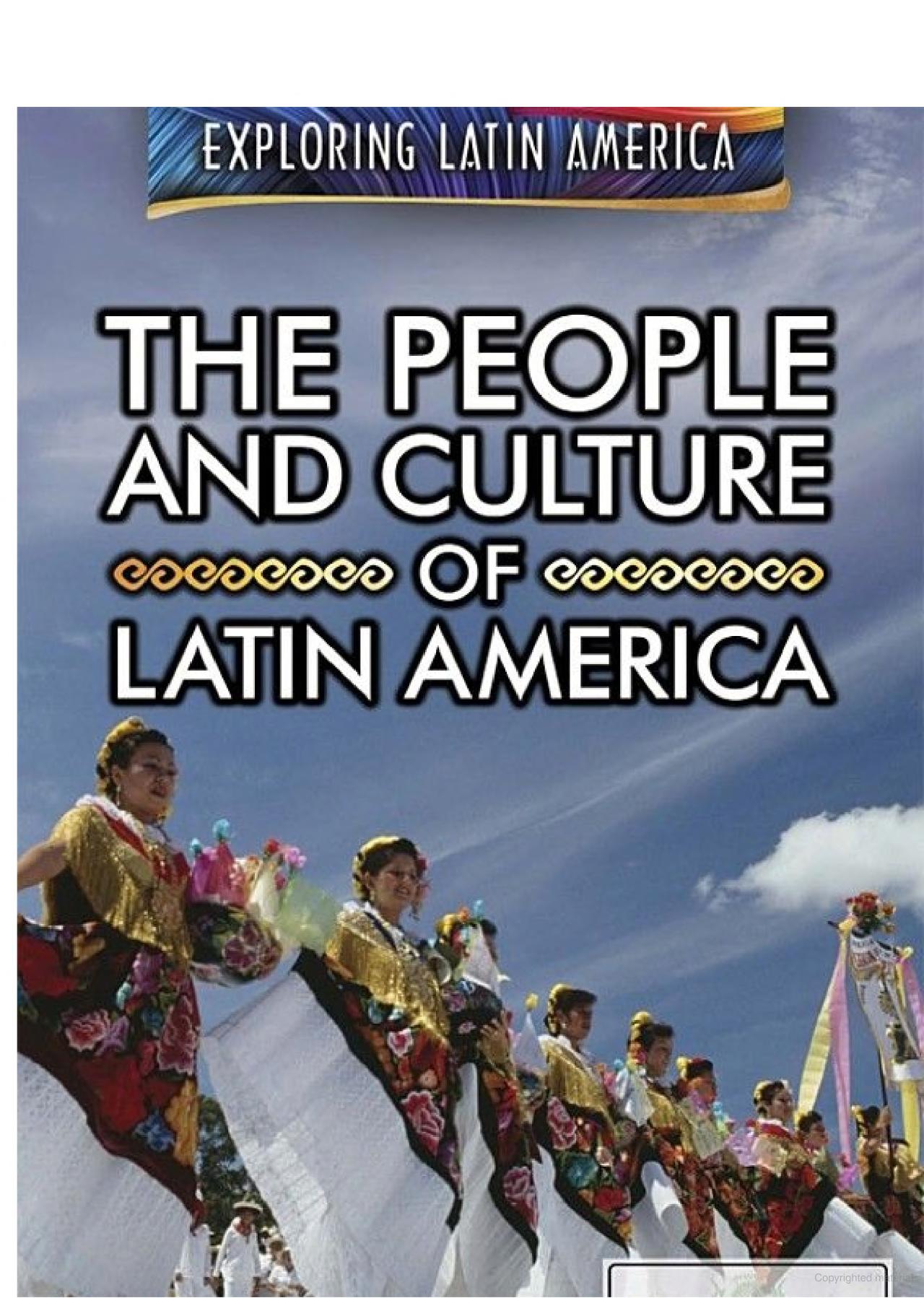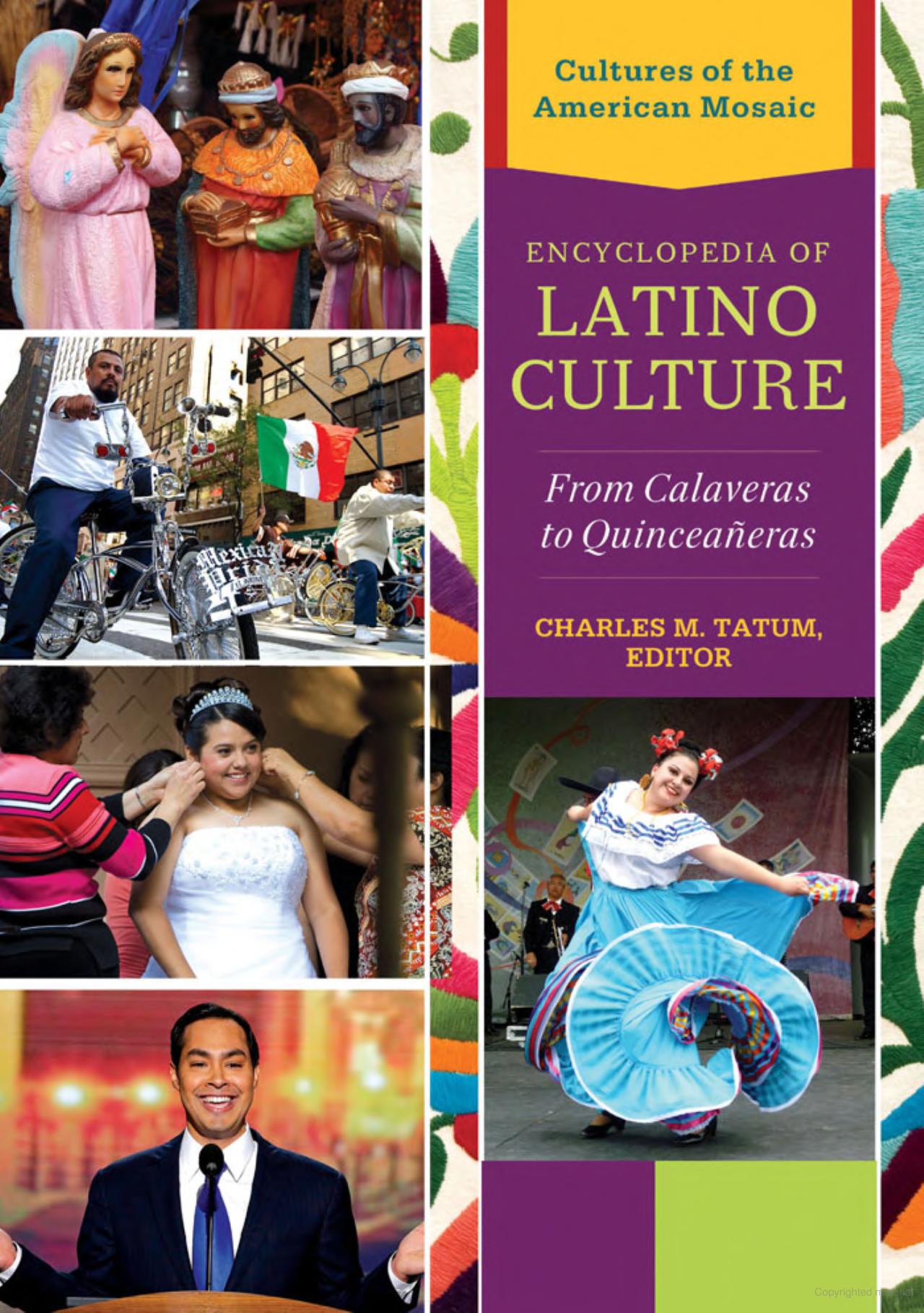Latinx Research Guide: Identity and Diversity
This page explores the sources of Latinos' diverse identities in terms of their culture, ethnicity, and gender.
*The Latinx Research Guide was made by Dr. Jessie Herrada Nance and Tori Stanek's WR 123 Research Writing class. The section on cultural identity was compiled by Arabella Nicdao.
Culture Resources
This section discusses the definition of cultural identity and the various experiences of Latino and mixed Latino (Africans, Bolivians, Columbians, Dominicans, Mexicans, Peruvians, Puerto Ricans, and so on) in achieving a balance in their identity given their two or more cultures. It also discusses the diversity of Latinos culture (cuisine, art, films, music, and literature) and traditional values (familismo, fatalismo, personalismo, and respeto) in comparison to their counterparts or their co-Latino/a and the United States.
What is Cultural Identity?
- Study Hall. “Identity and Culture in Communication | Human Communication | Study Hall.” YouTube, uploaded by Study Hall, 24 Aug. 2022, Accessed 24 Apr. 2023. (6 min: 59 sec )
This source examines the components of identity and culture using specific scenarios to explain how they are defined from diverse viewpoints. Being aware of this knowledge would allow us to understand one another in a variety of ways that would make us more conscious of who we are, our culture, and the identity and culture of others as well.
- NBC News. “Defining Latino: Young People Talk Identity, Belonging | NBC Latino | NBC News.” YouTube, 14 Sept. 2018, Accessed 24 Apr. 2023. (3 min: 48 sec)
This source covers young various Latinos' experiences with their identities and the experience of growing up in America with at least two different cultures. Some respondents describe how they are unsure of their true identity, but as time passes, they accept who they are.
Cultural Identity of Latinx Communities
- Beyond the Arch. “Latino Learning Modules: Latino Culture and Cultural Values.”, UGA, YouTube, 8 Oct. 2012, Accessed 24 Apr. 2023. (8:48 min)
This video analyzes and provides an overview of each Culture and Cultural Values of Latinos such as gender roles (machismo, marianismo), family roles (familismo), religion and spirituality (quinceanera, fatalismo), values and beliefs (personalismo, respeto).
- Grillot, Suzette. “Understanding the Global Community - Latin American Identity, Part I.” YouTube, uploaded by Janux, 25 Oct. 2014, Accessed 24 Apr. 2023.
This source covers the differences between Columbians and Chileans cultures vs. other Latinos and American cultures in a perspective of Colombian and Chilean professors.
- Grillot, Suzette. “Understanding the Global Community - Latin American Identity, Part II.” YouTube, uploaded by Janux, 25 Oct. 2014, Accessed 24 Apr. 2023.
This video covers the cultures of Peruvians vs. other Latinos culture from the perspective of a Peruvian professor.
- NBC News. “Joan Smalls: Being Latino Means Being ‘Bigger, Badder, Better’ | NBC Latino | NBC News.” YouTube, 21 Sept. 2017, Accessed 24 Apr. 2023. (2 min : 16 sec)
Joan Smalls, the main character, describes the stereotypes she experienced on not having the typical body shape, or measurement of Latin women. She wants the model industry to know that being Latin is not only “one thing”, but can also be different things, like her appearance as a model.
- Melgarejo, Victoria and Mary, Bucholtz. “‘Oh, I Don’t Even Know How to Say This in Spanish’: The Linguistic Representation of Latinxs in ‘Jane the Virgin.’” Spanish in Context, vol. 17, no. 3, Sept. 2020, pp. 488–510. EBSCOhost, Accessed 13 May. 2023.
“The highly rated American romance comedy-drama "Jane the Virgin" portrays Latinx culture and language in an engaging and realistic representation, with credible characters and complex linguistic interactions. This is in contrast to traditional depictions of Latinx culture and language, which often incorporate restricting and damaging misconceptions.”

- Nichols, Susan. “The People and Culture of Latin America.” United States, Rosen Publishing Group, 2017, Accessed 24 Apr. 2023.
“This book investigates the peoples of South America, Central America, Mexico, and the West Indies, offering an in-depth overview of their different cultures. It also examines Latin Americans' religions, languages, and ethnicity.”
- Nichols, Susan. “La gente y la cultura (The People and Culture of Latin America).” United States, Rosen Publishing Group, Incorporated, 2017, Accessed 24 Apr. 2023.
“Este libro explora los pueblos y culturas de Sud- y Centroamérica, México y las Antillas. Estas regiones latinoamericanas contienen gran variedad de tradiciones, religiones, idiomas, y gentes.”

- Charles M. Tatum. “Encyclopedia of Latino Culture: From Calaveras to Quinceañeras.” vol.3, United States, ABC-CLIO, 2013, Accessed 13 May. 2023.
“Latina/os are the fastest growing ethnic group in the United States and one of the largest minority groups. This three-volume set contains comprehensive information on a wide range of concepts, including cuisine, art, films, music, and literature.”
- Herrera-Sobek, María. “Celebrating Latino Folklore: An Encyclopedia of Cultural Traditions.” Google Books, vol. 3, ABC-CLIO, 2012, Accessed 13 May. 2023.
“This encyclopedia examines Latino folklore, including oral traditions and cultural heritage ranging from riddles to food and clothes. It covers 21 Latin American nations as these traditions have been passed down to the United States, illustrating how cultures intertwine to form a unique tapestry inside the United States.”
- Janer, Zilkia. “Latino Food Culture.” Ukraine, ABC-CLIO, 2008, Accessed 13 May. 2023.
“This book discusses the ongoing development of Latino food culture, focusing on how Latinos are adapting and transforming Latin American and international elements to create one of the most vibrant cuisines today. Latino food culture combines Spanish and Amerindian cuisines with African, European and Asian traditions to create one of the most vibrant cuisines today.”
Gender Resources
This section describes and explains how the Latino LGBTQIA+ community began and encountered many problems in society. It also discussed the gender roles between men and women, the commonly known “Marianismo” and “Machismo”, the gender
inequality in the Latino community, the insulating terminologies experienced by the Latino LGBTQIA+ community, and the gender shift in Latin America compared to the modern
world.
General Resources
- NextDayBetter. “A Living History of the LGBT Movement Since the 1800s.” YouTube, 27 Oct. 2018, Accessed 13 May. 2023.
A storytelling series celebrating LGBTQIA+ activists' movements from the past, present, and future. This series would introduce the people and the obstacles that made LGBTQIA+ communities stronger.
- Tzul Tzul, Ana Marina and Cosgrov, Serena. “Chapter 7: Latin America: Introducing the Region.” Pressbooks, Accessed 13 May. 2023.
This article describes Latinos women and people with nondominant gender identities are uniquely positioned to face challenges while advancing their rights. Gender gaps persist, such as machismo, which portrays men as unfaithful and mistreats women due to the gender hierarchies, the machismo/marianismo distinction.
The Role of Gender in Latinx Communities
- Gabriela Fresquez. “Let’s Talk About Gender Roles (And How They Affect The Latino Community) | Radar 2021.” YouTube, 23 Mar. 2021, Accessed 13 May. 2023.
Gabriela Fresquez explores gender roles, gender norms, and gender stereotypes in Latino cultures, which contribute to gender inequality in the Latino community, which are commonly known as marianismo and machismo.
- Elena Piech. “Fuerza: LGBTQ Latinx Youth Speak Their Truth.” YouTube, 13 Oct. 2017, Accessed 13 May. 2023.
This video discusses prejudice and verbal abuse against LGBTQIA+ individuals. Different LGBTQIA+ Latinx Youth describe how their culture and experiences from their family, friends, and society made them terrified to stand up for their truth or their true gender. In particular, it is still "taboo" to be gay from their family's perspective, which leads to them being called various derogatory terms.
- Vasquez, Jessica. "Gender Across family generations: Changes in Mexican American masculinities and femininities." Identities: Global Studies in Culture and Power, vol. 21, issue 5, 2014, 532-550, Accessed 24 Apr. 2023.
“Identities: Global Studies in Culture and Power investigates the modern world's construction and modification of racial, ethnic, national, transnational, and postcolonial identities. It establishes culture, representations, and identities as critical areas of dominance, struggle, and resistance.”
- Chant, Sylvia and Nikki Craske. Gender in Latin America. Latin American Bureau, 2003, JSTOR, Accessed 24 Apr. 2023.
“This work debunks previous universalizing preconceptions while documenting modern shifts in gender roles, gender relations, and gender- and sexuality-based identities."
Ethnicity Resources
This section discusses the ethnic groups and history of Latin
America, including trading, colonialism, and the
immigration/emigration/migration of people from Africa, Asia,
Europe, and USA.
Resources
- Gonzalez, Jose B. “Breakdown of Latin American Ethnic Groups.” Latino Stories, Sept. 2020, Accessed 24 Apr. 2023.
The data from this article is from the CIA. This article consists of countries in Latin America and the percentages of their ethnic groups in a table chart. - “List of Indigenous Peoples of Latin American Countries.” Virtual Health Library on Traditional, Complementary, and Integrative Medicine, 2 May 2018, Accessed 24 Apr. 2023.
This resource lists of indigenous people of Latin America. - “South America | Facts, Land, People, and Economy.” Encyclopedia Britannica, 30 Apr. 2023, Accessed 24 Apr. 2023.
This encyclopedia article provides information on how the people of Latin America became what they are today. From colonization, immigration, trading of Amerindians, Iberians, Africans, and people from Europe and Asia countries. - Wikipedia contributors. “Ethnic Groups in Latin America.” Wikipedia, Apr. 2023, Accessed 24 Apr. 2023.
The quality of information can be a start for general background information, there are various references and sources at the bottom that can also be used to check the credibility of the information. This source might not work for some people due to various reasons such as the information might not be peer reviewed, it might not go very deep, it might lack citations, and it might lack credibility because anyone can edit them and they may have biases. Overall, in any resource, not just Wikipedia, we should proceed with caution, use our critical thinking, and always verify with different resources whether the information is accurate.